The Massachusetts wine industry is a relative newcomer to the national wine scene - the state's first winery of the modern era opened in 1971.
Massachusetts boasts only about 30 wineries, but they are making a name for themselves. Several folks who know a lot more about Massachusetts wine than I do have told me it's high time that wine from the Bay State got its due.
The grapes you'll find growing in Massachusetts are likely to be Chardonnay, Pinot Noir, Riesling, Gewurztraminer, Pinot Blanc or Pinot Gris. They are also growing some American hybrids like Vidal Blanc and Cayuga. Wine made from fruit other than grapes is also in the picture, and mead - wine made from honey - figures in to the winescape.
Wine Country has already visited Massachusetts - Cape Cod Winery - which gave us a chance to try a wine made from hybrid grapes. This time, we taste some more traditional winemaking grapes.
Westport Rivers is a small, family-owned farm in Westport, Massachusetts which has been growing grapes and making wine for 25 years. Over that time they have racked up a lot of gold medals and good press, but they are most proud of the fact that their wine has been served in the White House under two administrations.
Their website sings the praises of their "dark, rich, New England loam on well drained gravel." The cool New England weather is tempered by the Gulf Stream, which warms the South Coast of Massachusetts. Westport Rivers is situated in the Southeastern
New England AVA, where most of the Massachusetts wineries are located. They are also a member of the Coastal Wine Trail of Southeastern New England.
The folks at Westport Rivers also sing the praises of their wines. They point out that their wines are literally tailor-made to go with the seafood and cheeses of their region. Westport Rivers was kind enough to provide six of their wines for the Now And Zin
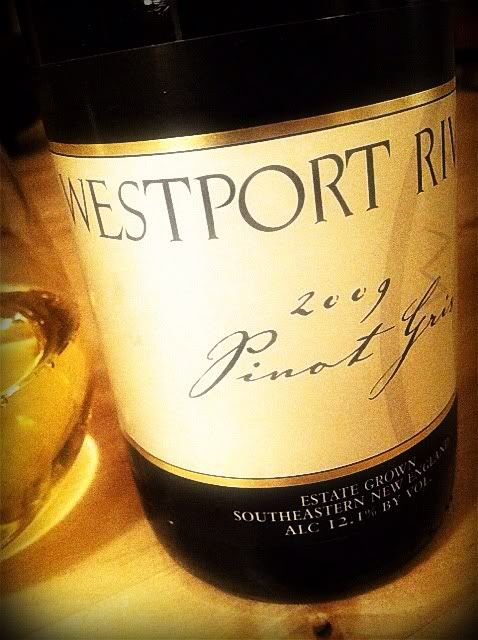 Westport Rivers Pinot Gris 2009 - After harvest they let the grapes sit in the press for a few hours before pressing, to give the wine some color and aromatics from the skins. It works! The wine has a great golden tint and the nose is bouquet of flowers - a big bouquet. There's also a touch of minerality in the aromas which comes across more like a gentle earthiness. The palate plays peaches against melons with a lovely herbal quality rising along with some acidity to keep things food friendly.
Westport Rivers Pinot Gris 2009 - After harvest they let the grapes sit in the press for a few hours before pressing, to give the wine some color and aromatics from the skins. It works! The wine has a great golden tint and the nose is bouquet of flowers - a big bouquet. There's also a touch of minerality in the aromas which comes across more like a gentle earthiness. The palate plays peaches against melons with a lovely herbal quality rising along with some acidity to keep things food friendly.
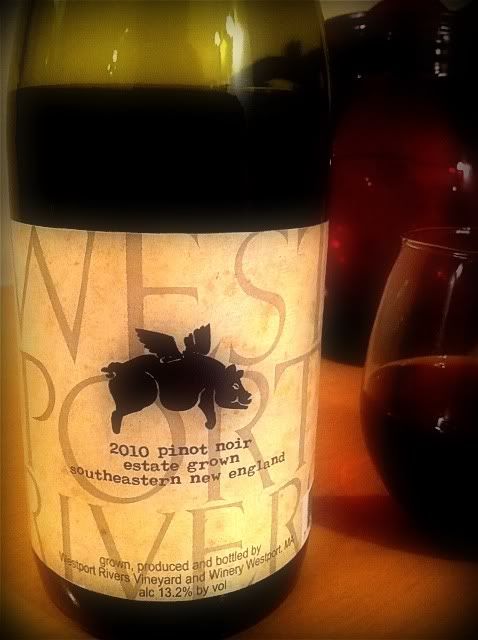 Westport Rivers Pinot Noir 2010 - At 13.2% abv, this is much more old world than new. Medium ruby in color, the nose on this Pinot Noir shows muted raspberry and a strong herbal aroma that smacks of greenness. It's nothing like a whiff of high octane Cali Pinot, that's for sure. The palate shows that same herbal edge, reminiscent of Cabernet Franc, and it weighs in nearly equally with the red plum and sour cherry flavors. The minerality is strong, the acidity lip smacking. It's herbaceousness and acidity show that the winemakers were thinking of the state's seafood bounty when they crafted this one. It's a light, even delicate, framework for a wine that's more about feel than flavor.
Westport Rivers Pinot Noir 2010 - At 13.2% abv, this is much more old world than new. Medium ruby in color, the nose on this Pinot Noir shows muted raspberry and a strong herbal aroma that smacks of greenness. It's nothing like a whiff of high octane Cali Pinot, that's for sure. The palate shows that same herbal edge, reminiscent of Cabernet Franc, and it weighs in nearly equally with the red plum and sour cherry flavors. The minerality is strong, the acidity lip smacking. It's herbaceousness and acidity show that the winemakers were thinking of the state's seafood bounty when they crafted this one. It's a light, even delicate, framework for a wine that's more about feel than flavor.
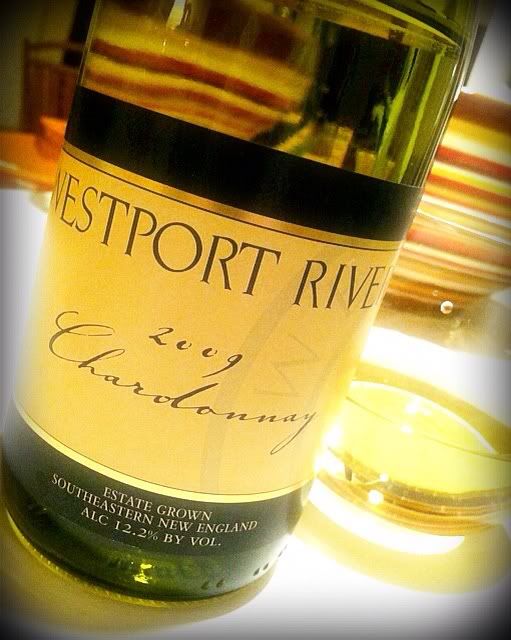 Westport Rivers Chardonnay 2009 - 100% estate-grown Chardonnay, this wine is 80% aged in French oak, sur-lie. Letting wine rest on the dead yeast during fermentation imparts a richer, fuller feeling. That does not come at the expense of acidity, though - there’s plenty of acid to tingle the taste buds. Big tropical aromas and spices dominate the nose, while the palate also gets the palm-tree treatment - there are traces of pineapple, guava, banana and even a little coconut in the flavor profile. There's also a trace of lemon peel and even a ginger-like quality that flirts on the palate. That earthy minerality shows up here, too, as it did in in Pinot Gris. It's quite a complex little Chardonnay, and - once again - not very California. A 12.2% abv number makes for a very drinkable wine.
Westport Rivers Chardonnay 2009 - 100% estate-grown Chardonnay, this wine is 80% aged in French oak, sur-lie. Letting wine rest on the dead yeast during fermentation imparts a richer, fuller feeling. That does not come at the expense of acidity, though - there’s plenty of acid to tingle the taste buds. Big tropical aromas and spices dominate the nose, while the palate also gets the palm-tree treatment - there are traces of pineapple, guava, banana and even a little coconut in the flavor profile. There's also a trace of lemon peel and even a ginger-like quality that flirts on the palate. That earthy minerality shows up here, too, as it did in in Pinot Gris. It's quite a complex little Chardonnay, and - once again - not very California. A 12.2% abv number makes for a very drinkable wine.
 Westport Brut RJR 2006 - A traditional method sparkler comprised of 65% Pinot Noir grapes and 35% Chardonnay, the Brut has a light golden hue. The frothy head dissipates quickly. Its nose reminds me of earthy peaches, very ripe. I swear I smell mayhaw jelly. On the palate there's a distinct banana flavor and a toastiness with that earthy quality. A light mouthfeel and a lingering sense of banana candy give me plenty to ponder while sipping. This is a singular sparkler in my tasting experience. It's fascinating. By the way, RJR stands for Robert James Russell, Westport Rivers' winemaker.
Westport Brut RJR 2006 - A traditional method sparkler comprised of 65% Pinot Noir grapes and 35% Chardonnay, the Brut has a light golden hue. The frothy head dissipates quickly. Its nose reminds me of earthy peaches, very ripe. I swear I smell mayhaw jelly. On the palate there's a distinct banana flavor and a toastiness with that earthy quality. A light mouthfeel and a lingering sense of banana candy give me plenty to ponder while sipping. This is a singular sparkler in my tasting experience. It's fascinating. By the way, RJR stands for Robert James Russell, Westport Rivers' winemaker.
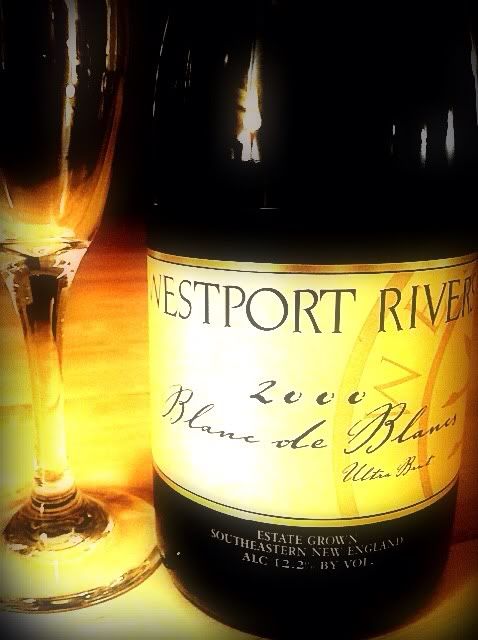 Blanc de Blancs Ultra Brut 2000- This yellow-gold sparkler offers one of the most pungent noses I've ever experienced in a sparkling wine. The tropical aromas I found in the Chardonnay are here, along with a heaping helping of toasty earthiness. The Blanc de Blancs is made from 100% Chardonnay grapes and is aged over seven years before finishing. The palate is rich and citrusy, with plenty of bubbles and a bracing acidity. There's a very intense nutty quality i find fascinating It does wonders for a handful of peanuts! The winery recommends you pair it with oysters, and that would seem to be an even better choice.
Blanc de Blancs Ultra Brut 2000- This yellow-gold sparkler offers one of the most pungent noses I've ever experienced in a sparkling wine. The tropical aromas I found in the Chardonnay are here, along with a heaping helping of toasty earthiness. The Blanc de Blancs is made from 100% Chardonnay grapes and is aged over seven years before finishing. The palate is rich and citrusy, with plenty of bubbles and a bracing acidity. There's a very intense nutty quality i find fascinating It does wonders for a handful of peanuts! The winery recommends you pair it with oysters, and that would seem to be an even better choice.
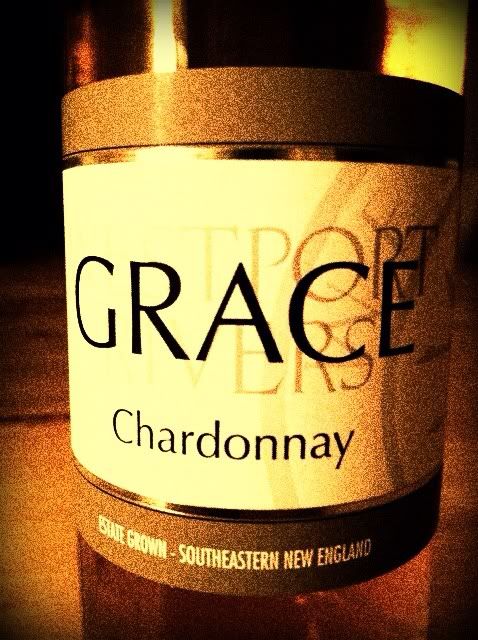 Grace Chardonnay NV - This is their aperitif Chardonnay, one of those gold medal winners they like to brag about. Westport Rivers blends their eau de vie of Chardonnay with fresh pressed Chardonnay juice, then they age it in French oak. Repeat for seven
Grace Chardonnay NV - This is their aperitif Chardonnay, one of those gold medal winners they like to brag about. Westport Rivers blends their eau de vie of Chardonnay with fresh pressed Chardonnay juice, then they age it in French oak. Repeat for seven
vintages and you've got Grace. It has an alcohol content of 17.5% abv, so you'll want to go easy on it before operating heavy machinery. This wine looks terrific in the glass. It's a rich shade tending towards amber, almost like bourbon. Gorgeous aromas of caramel and honey just about knock me off my feet. The palate is awash with flavors of lemon peel drenched in dark honey. After regaining consciousness, I realize what great acidity this wine has - feel free to bring on the fattiest cheese and pâté for it.
The one thing that keeps appearing in the wines of Westport Rivers is the amazing terroir, the sense of earth that permeates each of the wines I tried. It marks each wine as a distinctive representative of Wine Country Massachusetts.

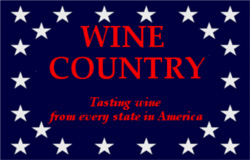
 Westport Rivers
Westport Rivers Westport Rivers Pinot Noir 2010 - At 13.2% abv, this is much more old world than new. Medium ruby in color, the nose on this Pinot Noir shows
Westport Rivers Pinot Noir 2010 - At 13.2% abv, this is much more old world than new. Medium ruby in color, the nose on this Pinot Noir shows  Westport Rivers Chardonnay 2009 - 100% estate-grown Chardonnay, this wine is 80% aged in French oak, sur-lie. Letting wine rest on the dead
Westport Rivers Chardonnay 2009 - 100% estate-grown Chardonnay, this wine is 80% aged in French oak, sur-lie. Letting wine rest on the dead  Westport Brut RJR 2006 - A traditional method sparkler comprised of 65% Pinot Noir grapes and 35% Chardonnay, the Brut has a
Westport Brut RJR 2006 - A traditional method sparkler comprised of 65% Pinot Noir grapes and 35% Chardonnay, the Brut has a  Blanc de Blancs Ultra Brut 2000- This yellow-gold sparkler offers one of the most pungent noses I've ever experienced in a
Blanc de Blancs Ultra Brut 2000- This yellow-gold sparkler offers one of the most pungent noses I've ever experienced in a  Grace Chardonnay NV - This is their aperitif Chardonnay, one of those gold medal winners they like to brag about. Westport Rivers
Grace Chardonnay NV - This is their aperitif Chardonnay, one of those gold medal winners they like to brag about. Westport Rivers 
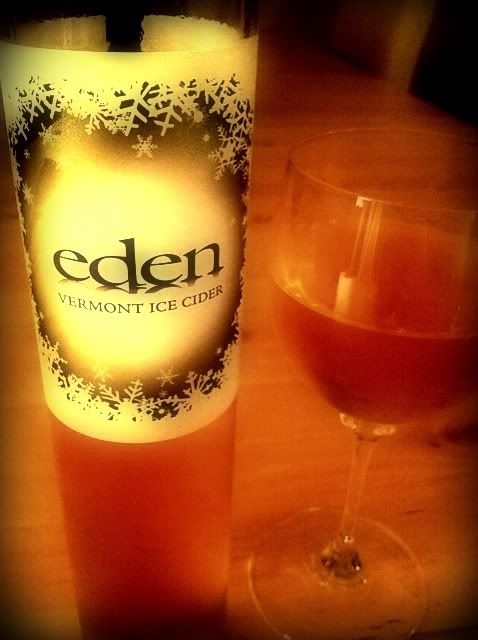 Eden Cidre de Glace du Vermont Calville Blend 2010Eleven different apple varieties go into this blend: Empire, Macintosh, Roxbury Russett, Calville Blanc, Cox's Orange Pippin, Hudson's Gem, Ashmead's Kernel, Esopus Spitzenberg, Black Oxford, Belle de Boskoop and Reinettes. Whew! This cider has a 10% abv number and 15% residual sugar.
Eden Cidre de Glace du Vermont Calville Blend 2010Eleven different apple varieties go into this blend: Empire, Macintosh, Roxbury Russett, Calville Blanc, Cox's Orange Pippin, Hudson's Gem, Ashmead's Kernel, Esopus Spitzenberg, Black Oxford, Belle de Boskoop and Reinettes. Whew! This cider has a 10% abv number and 15% residual sugar.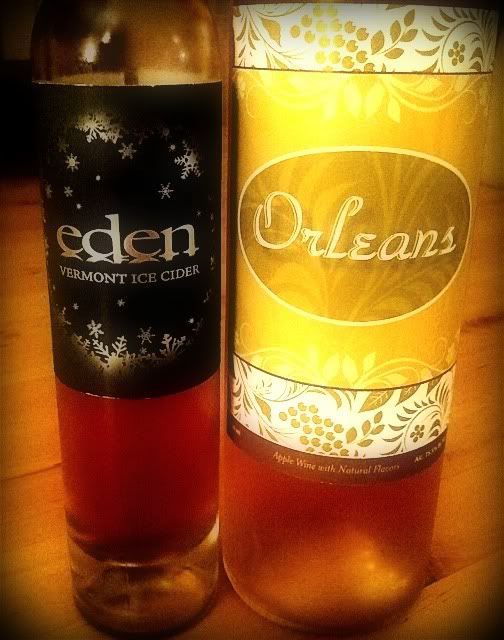 Eden Cidre de Glace du Vermont Northern Spy 2009This one is a single-variety ice cider made from 100% Northern Spy apples and aged in French oak for a year. The color is extremely rich looking, darker than the unoaked cider. It looks quite like bourbon in the glass and it smells like a holiday apple pie, with that baked apple aroma drenched in cinnamon and nutmeg. Much oak nuance graces the palate, too. It's viscous, like the unoaked, but a bit more tart on the finish. I find it quite complex with maybe a bit more of a "grownup" taste. They advise you pair it with cheddar or creamy blue cheese.
Eden Cidre de Glace du Vermont Northern Spy 2009This one is a single-variety ice cider made from 100% Northern Spy apples and aged in French oak for a year. The color is extremely rich looking, darker than the unoaked cider. It looks quite like bourbon in the glass and it smells like a holiday apple pie, with that baked apple aroma drenched in cinnamon and nutmeg. Much oak nuance graces the palate, too. It's viscous, like the unoaked, but a bit more tart on the finish. I find it quite complex with maybe a bit more of a "grownup" taste. They advise you pair it with cheddar or creamy blue cheese.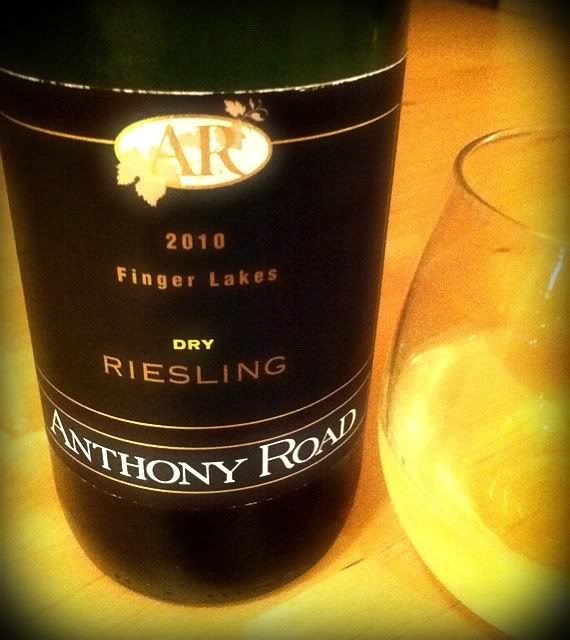 Anthony Road Wine Company
Anthony Road Wine Company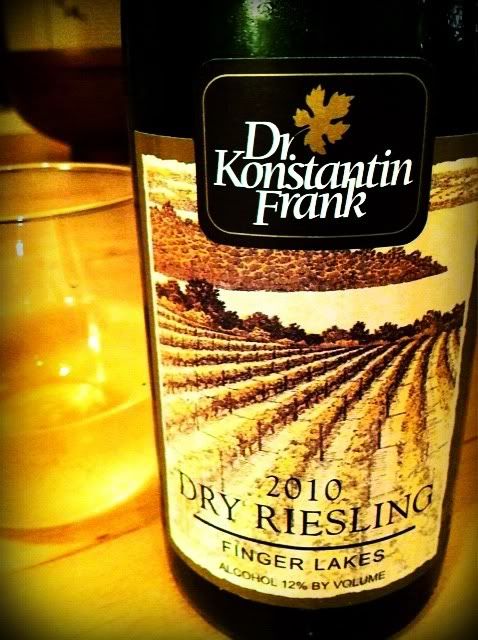 Dr. Frank's Vinifera Wine Cellars
Dr. Frank's Vinifera Wine Cellars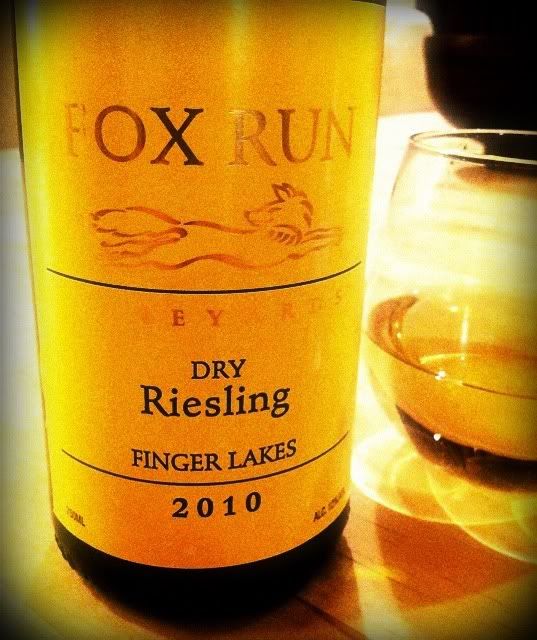 Fox Run Vineyards
Fox Run Vineyards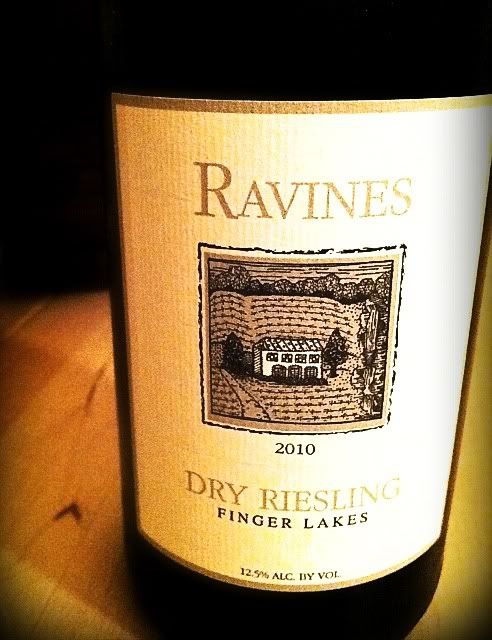 Ravines Wine Cellars
Ravines Wine Cellars Red Newt Cellars
Red Newt Cellars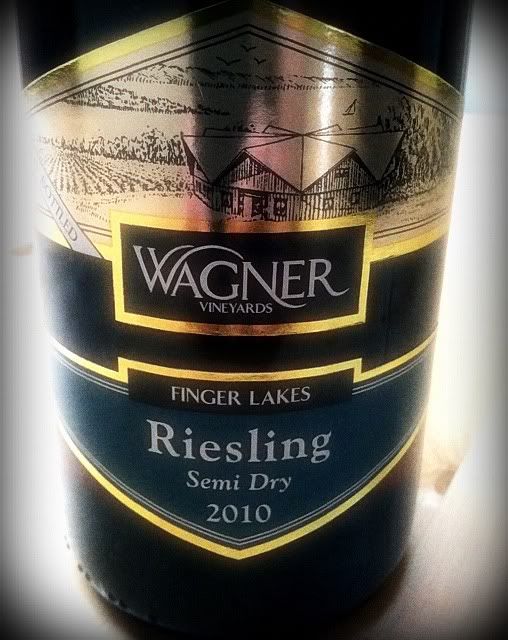 Wagner Vineyards
Wagner Vineyards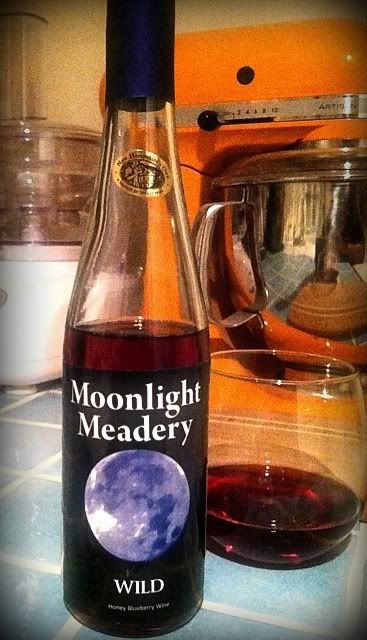 The mead he calls Wild is honey and blueberry wine made from unprocessed New Hampshire wildflower honey and mountain grown blueberries. It carries an alcohol level of 14.2% abv.
The mead he calls Wild is honey and blueberry wine made from unprocessed New Hampshire wildflower honey and mountain grown blueberries. It carries an alcohol level of 14.2% abv.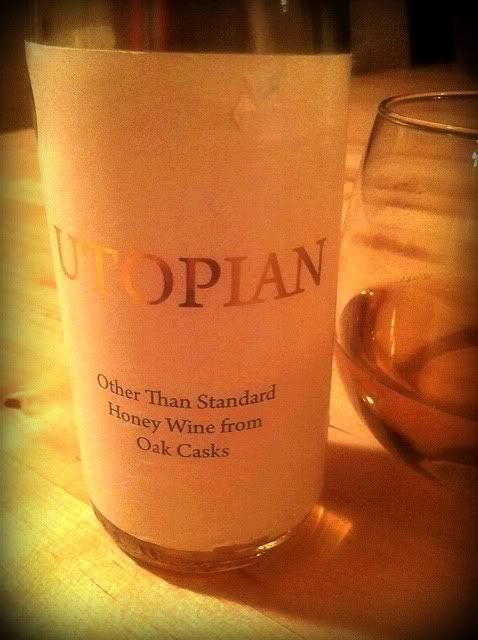 Utopian is the strongest of the quartet I tried at 16.9% abv. It’s a semi-sweet, limited edition mead which is fermented and aged in Samuel Adams Utopias barrels.
Utopian is the strongest of the quartet I tried at 16.9% abv. It’s a semi-sweet, limited edition mead which is fermented and aged in Samuel Adams Utopias barrels.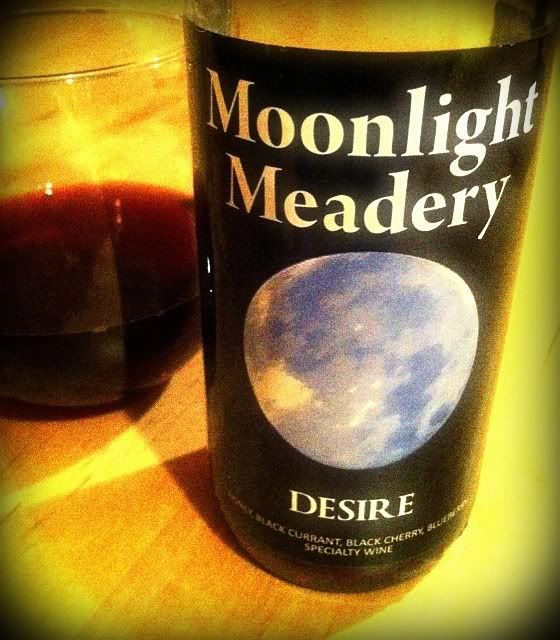 Desire is a beautiful deep ruby color. The nose again has a firm underpinning of honey aroma with a pretty straightforward display of the fruit used in making this melomel - black currant, black cherry and blueberry. The palate is dominated by the currant to the degree that it bears a striking similarity to cassis. It's not as viscous as Wild, but it definitely sits very full in the mouth. The 16.7% alcohol content means it's a fairly stiff drink, at least in the realm of wine. There's good acidity here, but I don't think I could bring myself to eat while savoring the texture and flavor of Desire. Well, maybe some chocolate. Desire beat out 352 other wines in a New England competition.
Desire is a beautiful deep ruby color. The nose again has a firm underpinning of honey aroma with a pretty straightforward display of the fruit used in making this melomel - black currant, black cherry and blueberry. The palate is dominated by the currant to the degree that it bears a striking similarity to cassis. It's not as viscous as Wild, but it definitely sits very full in the mouth. The 16.7% alcohol content means it's a fairly stiff drink, at least in the realm of wine. There's good acidity here, but I don't think I could bring myself to eat while savoring the texture and flavor of Desire. Well, maybe some chocolate. Desire beat out 352 other wines in a New England competition. The golden mead called Sensual shows a whole honeycomb full of honey aroma. That’s no surprise, since it is a traditional mead, made only from wildflower honey, water and yeast. The palate is dripping with honey, too. Once again, a resounding acidity is present and the finish is very long and ridiculously satisfying. The taste of pure honey is all that remains after a drink, and it’s there for quite a while. The alcohol level for Sensual is 15.3% abv. It's the simplest of the four featured here, but it may be my favorite.
The golden mead called Sensual shows a whole honeycomb full of honey aroma. That’s no surprise, since it is a traditional mead, made only from wildflower honey, water and yeast. The palate is dripping with honey, too. Once again, a resounding acidity is present and the finish is very long and ridiculously satisfying. The taste of pure honey is all that remains after a drink, and it’s there for quite a while. The alcohol level for Sensual is 15.3% abv. It's the simplest of the four featured here, but it may be my favorite.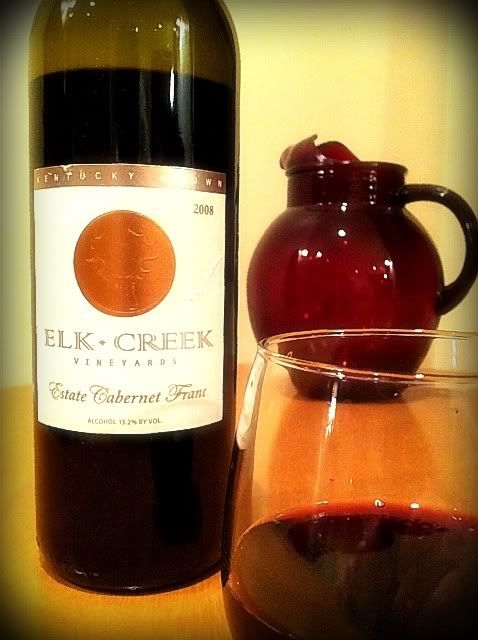 Elk Creek Vineyard's Estate Cabernet Franc 2008 is the second vintage of this wine from Elk Creek. Cab Franc is considered by the University of Kentucky to be
Elk Creek Vineyard's Estate Cabernet Franc 2008 is the second vintage of this wine from Elk Creek. Cab Franc is considered by the University of Kentucky to be 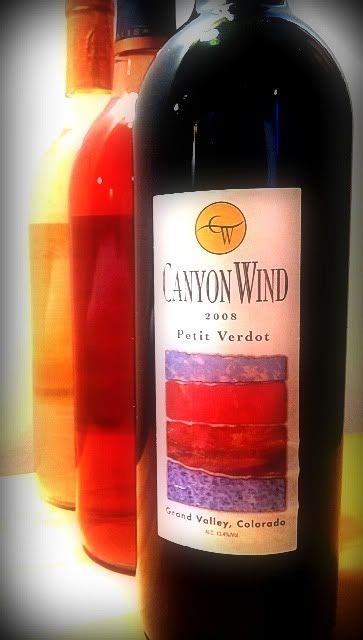 Canyon Wind Wines
Canyon Wind Wines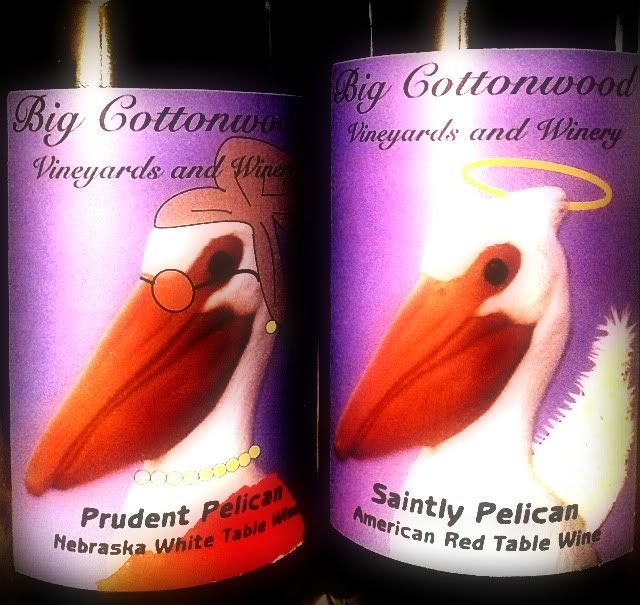 Prudent Pelican
Prudent Pelican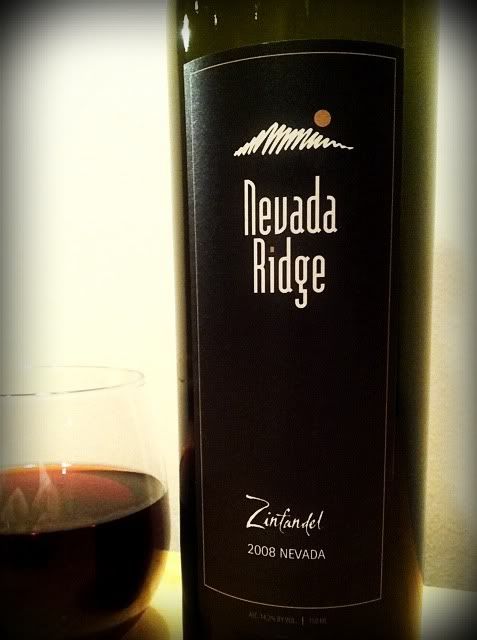 Pahrump Valley Winery was established in 1990 in the town that bills itself as "The Heart of the New Old West." Besides the winery, Pahrump is probably most noted for its legal brothels. Pahrump Valley's 2005 Nevada Ridge Zinfandel was the first Nevada-grown red wine produced in the state. They made 100 cases of that vintage and plan to produce 1200+ cases of wine in 2011. They also have the first-ever Nevada Port aging presently.
Pahrump Valley Winery was established in 1990 in the town that bills itself as "The Heart of the New Old West." Besides the winery, Pahrump is probably most noted for its legal brothels. Pahrump Valley's 2005 Nevada Ridge Zinfandel was the first Nevada-grown red wine produced in the state. They made 100 cases of that vintage and plan to produce 1200+ cases of wine in 2011. They also have the first-ever Nevada Port aging presently.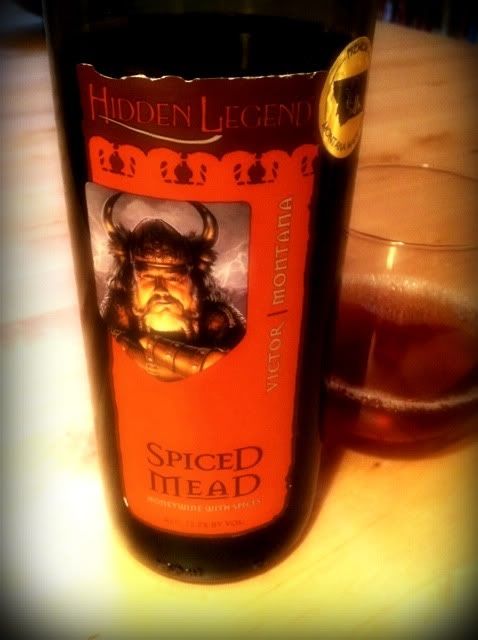 Hidden Legend Spiced MeadLabelled as "honeywine with spices" this beverage carries a suggestion that you "heat it with a stick of cinnamon or serve it over ice with a sprig of mint." It’s a beautiful reddish-brown color, rich, dark and inviting in the glass. The nose is fascinating, with honey dripping from it and spices coloring, but not covering those notes. The aromas remind me first of a Bit-O-Honey candy, then of cinnamon and allspice, and finally a waxy scent wafting up. The honey aromas aren’t really sweet - they are reminiscent of dark honey, like avocado honey or even chestnut honey.
Hidden Legend Spiced MeadLabelled as "honeywine with spices" this beverage carries a suggestion that you "heat it with a stick of cinnamon or serve it over ice with a sprig of mint." It’s a beautiful reddish-brown color, rich, dark and inviting in the glass. The nose is fascinating, with honey dripping from it and spices coloring, but not covering those notes. The aromas remind me first of a Bit-O-Honey candy, then of cinnamon and allspice, and finally a waxy scent wafting up. The honey aromas aren’t really sweet - they are reminiscent of dark honey, like avocado honey or even chestnut honey. Hidden Legend Wild Chokecherry Mead
Hidden Legend Wild Chokecherry Mead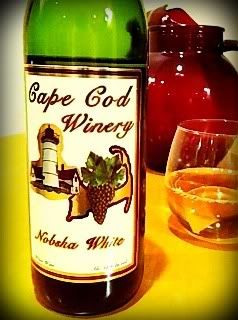 Cape Cod Winery's Nobska White blends Seyval Blanc and Vidal Blanc to produce a semi-sweet white wine with only 12% alcohol content. Both are hybrid grapes, with Seyval ripening early and well suited to cold weather and Vidal noted for its elevated sugar content and high acidity.
Cape Cod Winery's Nobska White blends Seyval Blanc and Vidal Blanc to produce a semi-sweet white wine with only 12% alcohol content. Both are hybrid grapes, with Seyval ripening early and well suited to cold weather and Vidal noted for its elevated sugar content and high acidity.